The Pays Taneka is one of the areas we liked the most from our trip to Benin. Located between the cities of Djougou and Natitingou, this ethnic group has lived as refugees in the mountains called Taneka for thousands of years in order to hide from attacks by other tribes, such as the Kingdom of Dahomey, who captured people in order to sell them as slaves.
The Taneka region is a beautiful region, located about 654 meters high, in an isolated area that is reached through dirt roads and where we can find a very authentic Africa that refuses to change. With mud houses perched under thousand-year-old trees symbolizing the spirit of their ancestors, this tribal group made up of heterogeneous groups of people is ruled by a monarchy of kings and priests who make the decisions and protect the inhabitants of the Pays Taneka.
Pays Taneka is a region of approximately 80,000 people. In fact, the name Taneka has two meanings: on the one hand it means “warriors”, due to its resistance to attacks by invaders; and on the other hand it means “people of stones”, emphasizing the characteristics of the territory on which we find ourselves. The people who have lived until today in these mountains come from different origins, but have always lived together due to a very choral and monarchical form of organization.
We were in this area for 2 days and were lucky enough to attend the funeral of one of the kings of the Pays Taneka. In Africa, death is experienced as a celebration of life and since the deceased had lived for many years, we could see how a great party was held to celebrate his life with concerts, meals for everyone and even killing a cow in gratitude for his presence during all these years.
Mainly, the Taneka tribal group consists of two urban centers: the Taneka Beri and the Taneka Koko. These two settlements are connected to each other by a 45-minute walking route along the Taneka Mountains. Thanks to the presence of different caves and shelters, this tribal group has been able to settle and stay in this area for many years without being seen by other groups of enemy tribes. However, nowadays due to the lack of water, electricity, work and modernity many descendants of the Pays Taneka go to live in the cities and only return to the village in special situations.
Visiting the Pays Taneka is a mandatory stop during your trip to Benin to see first-hand a town characterized by its own architecture of round mud houses with thatched roofs, and that has managed to preserve the authenticity of its culture and the values that have been passed down from generation to generation. A visit that will surely not leave you indifferent!
The Taneka region is located next to the main RNIE3 road that runs from Djougou to the north of the country. This region is mainly composed of two cores: Taneka Beri and Taneka Koko.
If you travel by public transport and want to get to Taneka Beri (as we did), the best way to get there is to take a bus that makes the route to Djougou or Natitingou and stops in Copargo. Copargo is a town on the main road that is located next to the Pays Taneka area. The journey we made with the company ATT from Cotonou to Djougou (it later stopped in Copargo) cost us, in May 2022, 7,000 CFA per person. The journey usually takes about 6-8 hours. If you’re coming from Natitingou, also look for public transport that can take you to Copargo.
From Copargo, you will be very close to the area where the Pays Taneka takes refuge. We took some motorcycles that took us to the village of Taneka Beri on dirt roads in a journey of about 20 minutes. The cost was 500 CFA per person per journey.
If you want to get to Taneka Koko, it will be much better to stop in the town of Fowa, located on the main road, and from there take a Zem to take you to Taneka Koko. Both Fowa and Copargo are located on the main road and therefore any bus coming from Natitingou, Abomey or Cotonou can surely leave you there.
If you travel with your own transport, you will have to access one of these two towns (depending on the destination you are going to, whether Taneka Beri or Taneka Koko) and then take a dirt road that will take you to the foot of the Taneka hills where this magical and special tribal group takes refuge.
What to do in Pays Taneka?
We stayed two nights in Pays Taneka and, after our experience, we recommend that you also stay overnight in some of the few accommodations they have. Many people make an afternoon visit, but we think it is nice to try to talk with people and discover this authentic environment in a more leisurely and calm way. The main activities we recommend doing there to get to know the Pays Taneka are:
– Walk through the village of Taneka Beri
Taneka Beri is a town that has stolen our hearts. It was our base camp during the 3 days we were discovering the Pays Taneka and it is a very hospitable place, which is located right on the slope of the Taneka Mountains and stands out for its houses of a very special architecture.
To walk through Taneka Beri is to walk between low, round mud houses and cone-shaped thatched roofs. To walk through Taneka Beri is also to see huge trees located right next to the houses. To walk through Taneka Beri is also to sit in some root of the tree and see how people live in this special place. Strolling around Taneka Beri is very nice and beautiful. To walk through Taneka Beri is to discover new cultures. And walking around Taneka Beri is one of the best things you can do to interact with local people (try to learn a word of their language, yom) and have a magnificent experience in this authentic place in Africa.
Keep in mind that people live there, so Taneka Beri is not a circus where you can take pictures without asking permission. They open the doors of their house to you and it is very important to respect that. Dialogue with them, play, ask questions and interact in order to have the necessary confidence and take, if you want, photographs. We, as we stayed downstairs in the community hostel that Latif runs, learned four words of their language and with this many people invited us to sit in their courtyards in order to dialogue with them.
In addition, we were lucky that in those days they celebrated the burial of one of the kings and, therefore, there were many people in the town and they had a great party and killed a cow in honor of that person’s life. We were the only outsiders there, but we felt totally at home, spending the whole afternoon sitting on a path where there were different street stalls and watching how people met, laughed and lived in that characteristic place.
Taneka Beri has managed to preserve the authenticity of its culture, its architecture (like the Tata Somba, if you want to know this group from Benin and Togo click here) and the values that formerly defended its ancestors; and despite the fact that there are fewer and fewer people living there, for us it was one of the best experiences during our trip to Benin.
– Discover the village of Taneka Koko
Just across the mountain from Taneka Beri we find the other nucleus of the Pays Taneka, known as Taneka Koko. Here we already find more modern houses, made of uralite and perhaps not as mystical as Taneka Beri, which is located in the middle of huge trees. In any case, it is the largest nucleus and one of the most visited since it is where the headquarters of the Taneka monarchy is located.
In Taneka Koko we were able to meet one of the shamans, who together with the kings, are the leaders of the tribe and those who make the decisions in a community way. Even today, these healers are traditionally dressed in a raffia cap wearing the body half naked and only covered by simple animal skin covers. In addition, they smoke a pipe all day in order to communicate with their ancestors and be able to conjure up in the day-to-day life of the community. Each shaman is in charge of a specific question and, today, there are still many who trust in his intercession.
In addition, the population of the Pays Taneka is characterized by an intrinsic capacity to live in a community (despite diverse origins) and a life that revolves around agriculture. For this reason, surely at Taneka Koko you will be able to try some of the local alcoholic drinks they make like craft beer which is very different from the beers we are used to here in Europe.
Taneka Koko is one of the most important towns in the Pays Taneka where they try to overcome different problems such as the exodus of many of its inhabitants who go to live in other regions in order to live in places where they have access to water and earn a better living than in the Taneka mountains.
– Walk between Taneka Koko and Taneka Beri for the mountains and discover some caves where people took refuge
If you want to visit the two main towns of the Pays Taneka, you can connect them through a mountain path of about 45 minutes without much unevenness and that crosses the Taneka Mountains.
We made this trip with Samadu, a very nice boy, who charged us 3,000 CFA per person. It was a circular route, although he later stayed at Taneka Koko and did not return with us. During the journey, we could see small fields and some animistic signs such as amulets in the trees. If you want to contact him, you can call him at +22997555925.
In addition, during the tour you can access some of the caves where the Taneka people took refuge and see a magical tree where the girls come to ask for fertility to give birth to a new life. The best known grotto is known as Fènèhou. From there, the village of Taneka Koko is within walking distance.
Legend has it that enemy tribes scared the people of the Pays Taneka because they believed they had magical powers and disappeared from nowhere. Since they could not find them, they thought it was a matter of the spirits that made them invisible. In reality, however, they quickly hid in the sacred cave we visited and there took refuge from the capture of their enemies.
– Marvel at the history and hierarchical functioning of this tribal group
The Pays Taneka is a group where people of different ethnic origins currently coexist. For example, we find the Kabye, originally from these lands, or also the Bariba, originally from Nigeria, and the Gourmantché who arrived in the Pays Taneka area fleeing epidemics and attacks by enemy tribes. There, they took refuge together with the Kabye forming what, to this day, we know as the Pays Taneka.
The differences between these three subgroups can be found, for example, with scarifications or religion. Kabye are characterized by wearing two small scarifications on their faces and are animistic; while the Bariba have a vertical cut on one side of the face and are Muslim. Gourmantché also believe in the Islamic religion, and when it comes to scarifications, women wear four on their faces while men only three. Nowadays, as was the case with the Holi group (if you want to know more, you can click here), among young people there is an increasing reluctance to carry these scarifications.
At the hierarchical level, the Pays Taneka is ruled by kings (known as sawa) who are of Bariba origin and who are responsible for making decisions for the people. These are elected by an assembly of elderly people who live in the village. Next to the king there are different dignitaries such as the Tung-te (who would be as if they were the mayors), who are of the Kabye ethnic group, and who are in charge of assigning the land to the different families. This land will be preserved for life. The Tung-te are also involved in the election of the new king and in the most important decisions for the Taneka community. Finally, along with these political leaders, the animist priests or healers stand out, a kind of spiritual leader who is easily recognized by his clothing and who is responsible for interceding with ancestors to find solutions to different aspects that may affect the people of the Pays Taneka such as procreation, death, agriculture, tradition…
The animist tradition is very present in this community. In fact, every 5 years there is a unique celebration known as the Ritual of the Passage, where children take the step towards adult life. For this reason, all families of Taneka origin living in the cities return to the village for a few days, sacrifice animals and have a great party to celebrate this ritual.
Where to sleep in Pays Taneka?
If you want to stay overnight in Pays Taneka and get to know the people of Taneka Beri up close, the only accommodation you will find will be:
– Foundation Taneka Beri: This accommodation managed by the Taneka Beri community and run by Latif was our base camp during the visit to Pays Taneka. It is located just below the village and consists of different rooms in cabins that have bed and mosquito net. Don’t expect great luxury, but you will find enormous hospitality in a fantastic setting. In addition, they can cook you if you need food and they can organize different activities at incredible prices. A very nice place with perfect value for money. If you want to contact them, you can write directly to Latif’s WhatsApp which is +229 97 05 50 70.
Our route
DAY 1: We woke up for the last time in Cotonou, the main city of Benin. After many days of stay at Haie Vive, our base camp during our visit to southern Benin, it was time to continue advancing during our sabbatical through the African continent. From there, we had been able to discover unique places such as Ganvié, known as the African Venice or Grand Popo, an area of paradisiacal beaches and an impressive mouth. We had also learned about the tragic history of slaves in Ouidah. In addition, we had traveled with Euloge to discover Abomey and voodoo traditions and meet different ethnic groups in the south of the country. And we had also been very lucky to receive the visit of Xoli who accompanied us during our tour of this part of the country.
Now it was time to pack our backpacks again and head north, to the Djougou area, where a very special visit awaited us: the Pays Taneka. We left the accommodation early with a motorcycle that for 250 CFA per person took us to the ATT station in Wologuèdè. The ATT was the bus company with which we would travel for about 8 hours and that would take us from Cotonou to Copargo.
Being a long-distance journey, no more people could come to the bus than allowed. So, we made sure we had a seat to spend that long day on the road. It took us a while to leave Cotonou, with countless motorcycles riding left and right, and then we headed towards Bohicon, our first stop.
Every stop we made on the way meant the opening of a street market right at the door of the bus. Women, children and men who, with elongated arms, offered peanuts, water, soft drinks, mobile phone chargers, corn, popcorn… in exchange for a few coins. Many people on the bus took the opportunity to go to the toilet or to buy some groceries and thus be able to face the next stage of the trip in good condition.
On the bus we had a television screen that broadcast an African series (of Nigerian origin we were told) about a traditional family life, where women took care of household chores and were constantly angry with men, whom they accused of being lazy and of not knowing how to do anything. Despite not understanding the language in which he was, the gestures of the actors and actresses made us raise more than one smile, like the rest of the passengers on the bus.
Without almost realizing it, after watching this series, watching from the window as the landscape became more rural and sleeping intermittently, we arrived at Djougou. There, the bus driver informed us that he was also stopping in Copargo, the destination that he had previously informed us in Latif by WhatsApp, so we took advantage of the fact that we were already in place to continue the journey for about 20 more minutes until we reached our final destination.
We already had our butt squared after having been seated on a bus seat for more than seven hours, but we were finally closer to our final destination. Once we got off at Copargo station, some young people came to negotiate the amount of the journey to our final destination: the Pays Taneka. For them, it was very easy to get the fate right because two whites in Copargo are very likely to visit one of the most beautiful but at the same time unknown and little visited tribal groups in Benin.
We were lucky that Latif had previously informed us of the price, so the young people had little to do with us. So we took two motorcycles and in a journey of about 20 minutes we went to Taneka Beri, Latif’s village. The journey was very beautiful, passing through agricultural fields and approaching some mountains that were like small hills and were known by the name of Taneka.
We reached the mountainside and there Latif was waiting for us. We were the only clients and, after formalizing the whole issue of registering the passport, making the payment and learning a few words in yom, we went to rest in what would be our room for two nights. It was a spacious room located in a round-shaped cabin. In fact, the whole cabin was our room and there, we were able to rest for a while, before going to discover the environment where we were.
At dusk, we walked up a steep ascent leading from our lodging to a hill where many trees could be seen. We began to climb and our surprise was when we began to see the different characteristic homes of Taneka Beri, small and low mud huts with thatched roofs that were scattered throughout that small space next to the trees and on different levels. It was a mixture of mysticism and simplicity with a unique architecture that made us feel very lucky.
We walked through the different streets (which, rather, were trails) and greeted the local people with what little we had learned about yom. Everyone already had us seen us because we were the only two whites in the entire area. One family invited us to sit at the entrance of their house while we talked to the women who did nothing but laugh. Beyond, there was a large vinyl nailed to a wall with the face of a person we later learned was one of the kings of the Pays Taneka. King Adjenin had died on May 17 and the whole town was preparing his farewell party which, by tradition, was held on the seventh day of his burial. They showed us the door of their house and we could see how the women were preparing the food of what would be a communal meal for the whole village.
The day was already going out but we still had in our retina the beautiful image of Taneka Beri, with the mud houses located next to tall trees of thick bark, small bonfires that were lit in every home and impromptu meetings between the local people preparing for a great party: gratitude for the life lived of this king.
We walked back to our accommodation where they prepared a good dinner and went to rest after a long day of travel. A journey that had been very worthwhile because we were in a place, which despite modernity, was reluctant to change. We went to bed thinking about the different cultures that coexist on the planet and, with the noises of rodents that made a good party on the ceiling of our room, our eyes were closing little by little…
DAY 2: Early in the morning, the noise of motorcycles woke us up. As it was very difficult to reach the top of Taneka Beri, many waited in the accommodation area to travel to Copargo or Djougou. Living in Pays Taneka can be very idyllic but it is also very difficult for local people. Without any water and electricity network, living is not easy. In addition, the lack of work caused many people originally from there to emigrate to towns or cities in order to find a salary and a way to earn a living.
Latif was already roaming around. Of small stature, this man who always had a half smile drawn on his face and who showed an incredible dose of calm, told us what we could do during that day to discover more about the Pays Taneka. He told us that we could walk to Taneka Koko if we wanted, but that he could not accompany us because he was very busy. He told us that Samadu, who came from Taneka Koko, could come with us, so while we were waiting for him we decided to say good morning to the village of Taneka Beri.
So, we visited the Taneka Beri village again seeing the daily routines of many homes: washing the utensils of the previous day, sweeping the yard of the house, waking up the children of the house and starting a new day on the slope of that mountain.
We went down to the accommodation and shortly after, Samadu arrived, a young Taneka boy who spoke French and who would accompany us to Taneka Koko to meet the town where we find the seat of the monarchy of the country. We left Taneka Beri behind and began to enter the vegetation following Samadu’s quick steps. We advanced over the mountain to the west and passed by different pieces of cultivated land, where we saw people rolling up their sleeves pulling weeds and tending their agriculture.
From the top, we could see the immense plain of the Djougou region in front of us. We are not surprised that this mountain was an ideal place to see where the enemy tribes came from and take refuge so as not to be captured. We entered through a small forest until Samadu told us that we were now approaching one of the most important sacred sites for the people of the Pays Taneka: the place of refuge of the Taneka population during the reign of the Dahomey or Ashanti tribe.
Before arriving at the cave, a small tree decorated with animistic symbolism (animal amulets, feathers, strings…) indicated that it was a place where many women went to ask spirits for fertility. And, a little further up the tree, we could see a small crack between the mountains. We were in Fenèhou, the sacred cave of the Pays Taneka.
Samadu told us that this place was discovered by a woman who was looking for water. He heard his name from the mountain and there he found an ideal cave to hide from the enemy tribes who came looking for them as slaves. Therefore, this cave had a very special meaning for all the local population. Without this hiding place, perhaps this village would have disappeared and many would have left on a journey of no return as slaves.
After entering the beginning of the cave, we continued our route until we reached Taneka Koko. This village looked bigger and more modern than Taneka Beri, at least in terms of architecture as we found many houses with uralite roofs. It was a nucleus located on the other side of the mountain where more movement could be seen.
As soon as we arrived we saw different children running to catch each other with a log in their hand that they used as a steering wheel. Suddenly, just after passing a small rectangular mud house, Samadu greeted a woman who invited us to drink a glass of craft beer that they made at home. The Pays Taneka area is an agricultural area where millet predominates, cereal through which they make the beer we were trying.
We continued our route until we reached the house where Samadu and his family lived. They were seen as a very simple and laughing family trying to live in that town and earn a living. We chatted with them for a while about the future of their people and took a picture to immortalize that hospitality.
Then we went to see one of the most important figures in the Taneka tradition – the shaman. We came to a traditional house (like the ones we were used to seeing in Taneka Beri) and there was an elderly person who went with a bare torso and a cap. He smoked a pipe that was used to communicate with his ancestors. Each shaman had a specific function and the man we had gone to see was in charge of mediating in all matters related to agriculture. The tradition has survived to this day and these figures are highly respected in the culture of the Pays Taneka.
We said goodbye to the shaman, to whom we fell very nice, and we went for a walk through Taneka Koko where we saw many more constructions than in its neighbor Taneka Beri. There, we said goodbye to Samadu who had accompanied us throughout that journey and who showed us the way back. I had no loss. Taking that small path we would end up again at Taneka Beri, this time entering from behind, just the other end of where we had the accommodation.
We made the trip commenting on the uniqueness of this special area of Benin, until we arrived again at the houses of traditional architecture. We were arriving at Taneka Beri and the village was crowded. We sat next to a tree, near some men chatting sitting on the roots of a tree, a boy who took the opportunity to rest lying on the floor and two girls who looked at us curiously with a sweet laugh. We felt watched but the people there were very hospitable.
After a while of having rested, we advanced towards the house of the king who had died, and there we found an almost dismembered cow. They were sacrificing the animal to celebrate the farewell party and distribute all the meat among the inhabitants of the village as a symbol of joy for the life that this king had represented. Some women heated large pots over a fire while the cow was beheaded on the floor.
We returned to the accommodation and were surprised to see some local musicians carrying a small stringed instrument and Latif who was busy placing white plastic chairs. I told you this morning that a long day awaited me today, he told us. It turns out that at lunchtime a great party was held in our accommodation – the king’s farewell party.
People started arriving and we sat a few rows further to watch the concert. Afterwards, some women took dishes, began to fill them with food and passed them so that all the people gathered there had food. There were those who came with the best galas. Others had their cars parked there because they came from the city… It was the start of a great party!
After eating, music began to play and an impromptu dance floor formed under the cabin that was the dining room of our accommodation. There, many men drank beer and shouted euphoric, as they wondered what we were doing there. After playing a game of hands and laughing together for a while, we were invited to dance. They were waiting to see how the whites danced and the truth is that we did not disappoint.
It is true that we will never match the style of how they were dressed (in colorful clothes and long dresses) or how they danced (with an amazing body rhythm). But we were very lucky to coincide with that party and to be able to take photos with princesses of royalty and experience that local holiday firsthand.
In the afternoon, the people who lived in the city left and we went again to the top of Taneka Beri to see the atmosphere that was breathed there. We sat next to a small grocery stall, where there were other people spending the afternoon. We got bored hanging out, a task that in these places is very grateful to do because you always have places to observe. For example, we could see how a woman got angry with a girl who must have been about 4-5 years old because she was getting late and not coming home; or how some children wanted to play with us by putting into practice hand games that we had taught during our stay there…
Some bonfires were already opening and the day was over in the Taneka Mountains. We said goodbye for the last time to this special town with the image of people around the fire singing and telling stories, next to mud houses dwarfed under the large millennial trees that sheltered the people of the Pays Taneka. A place that refuses to change. A place faithful to its traditions.

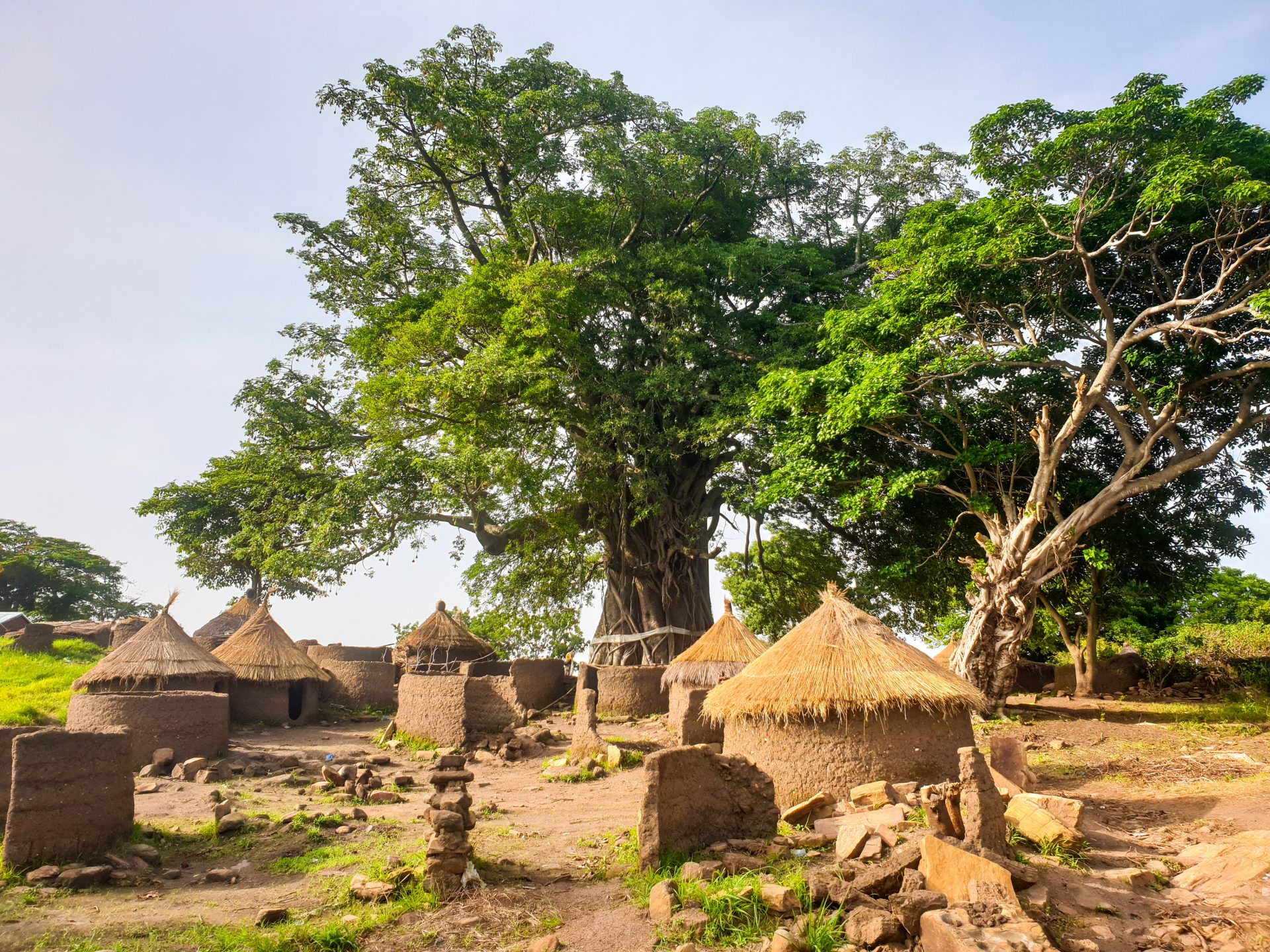

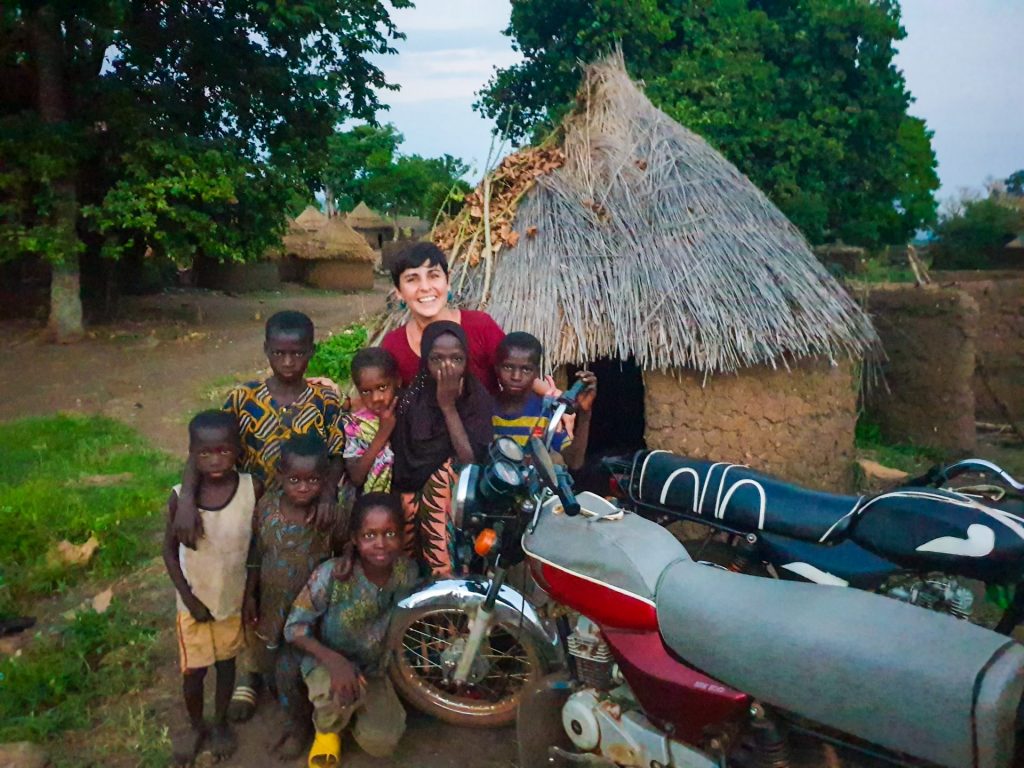


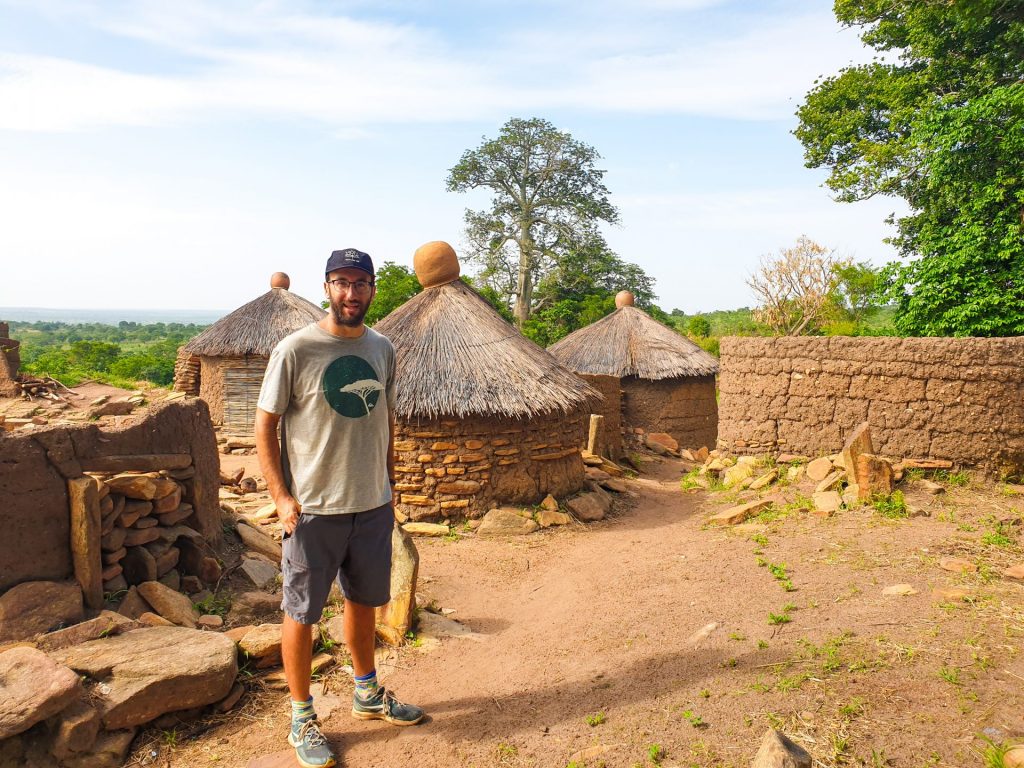

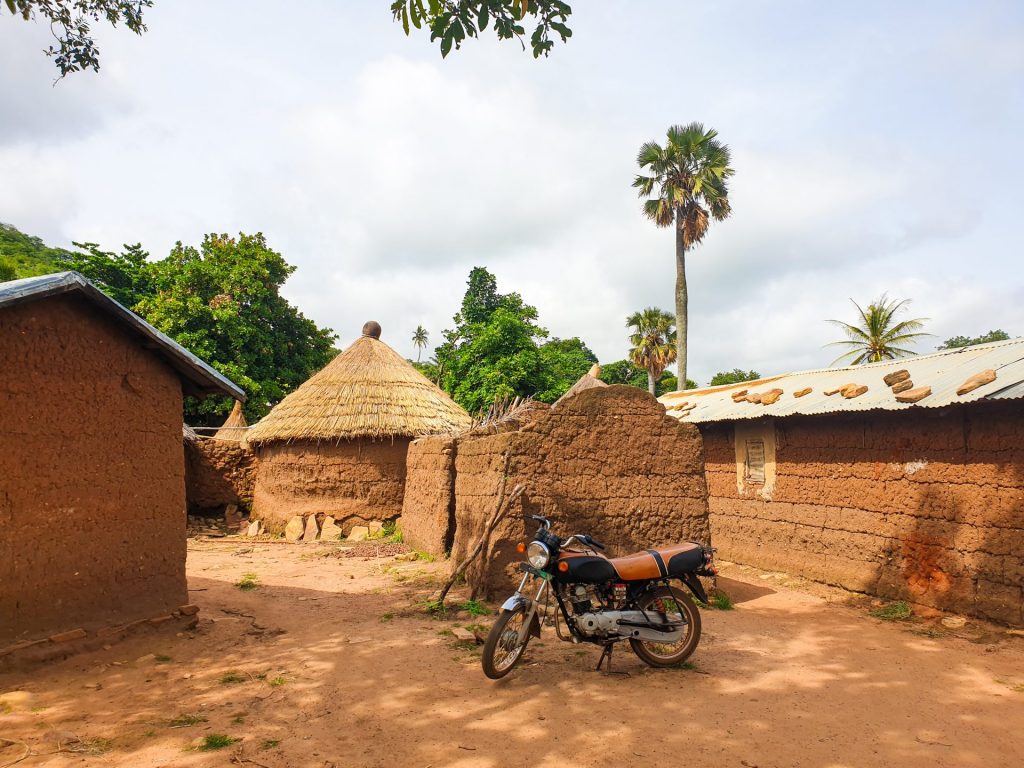

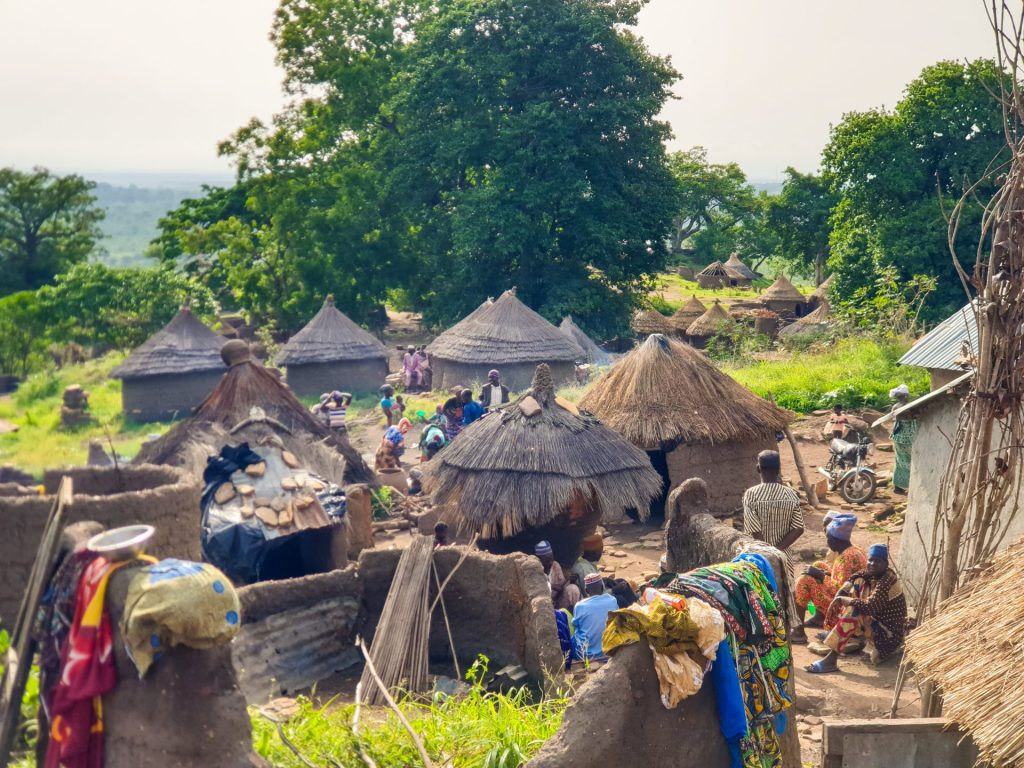

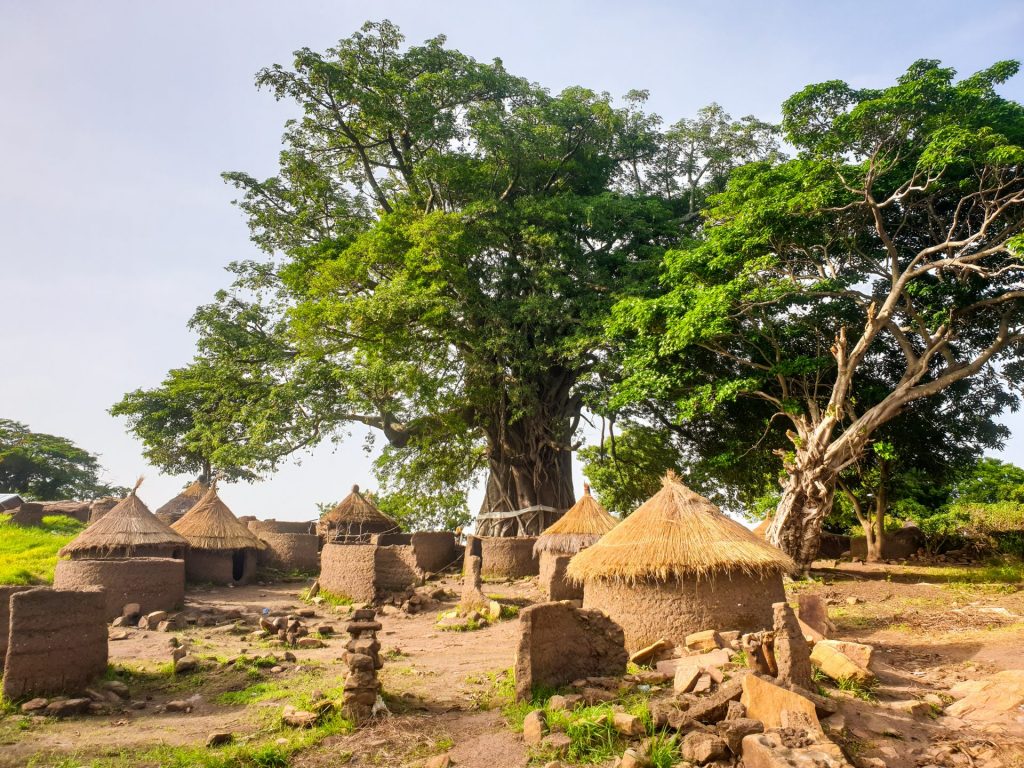
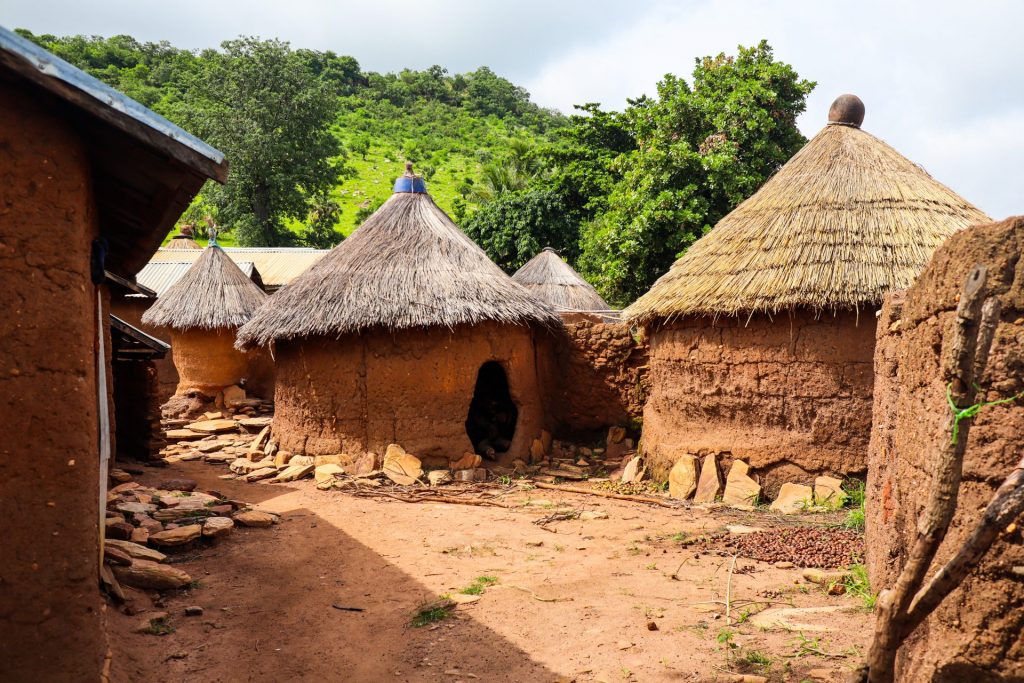
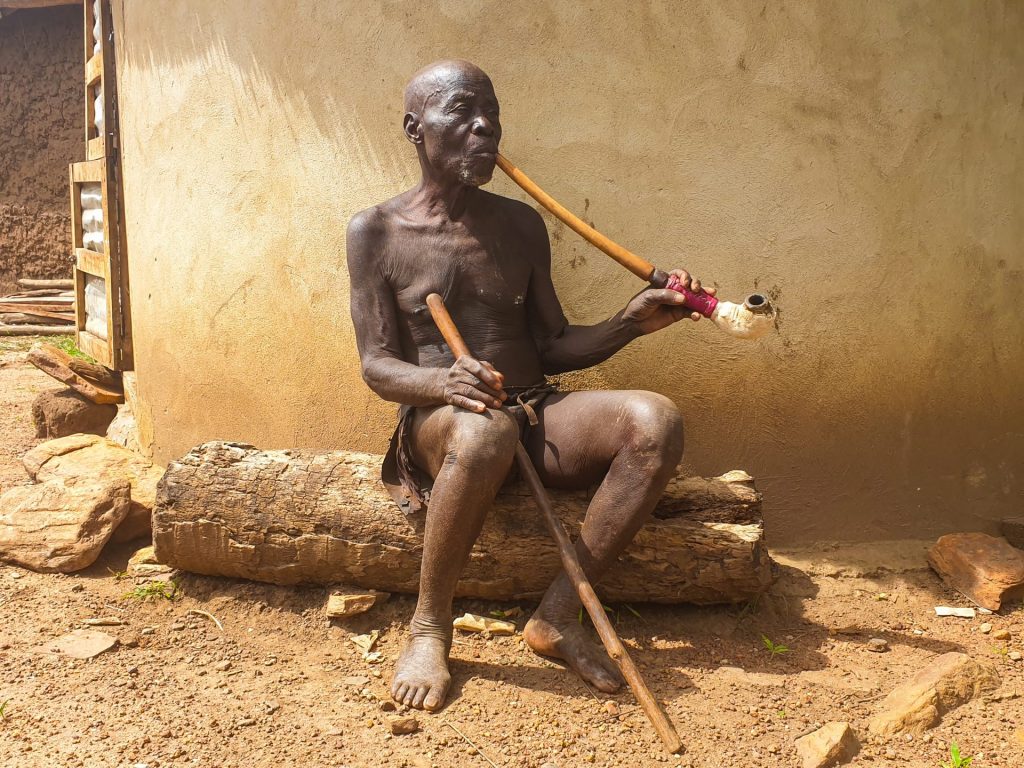


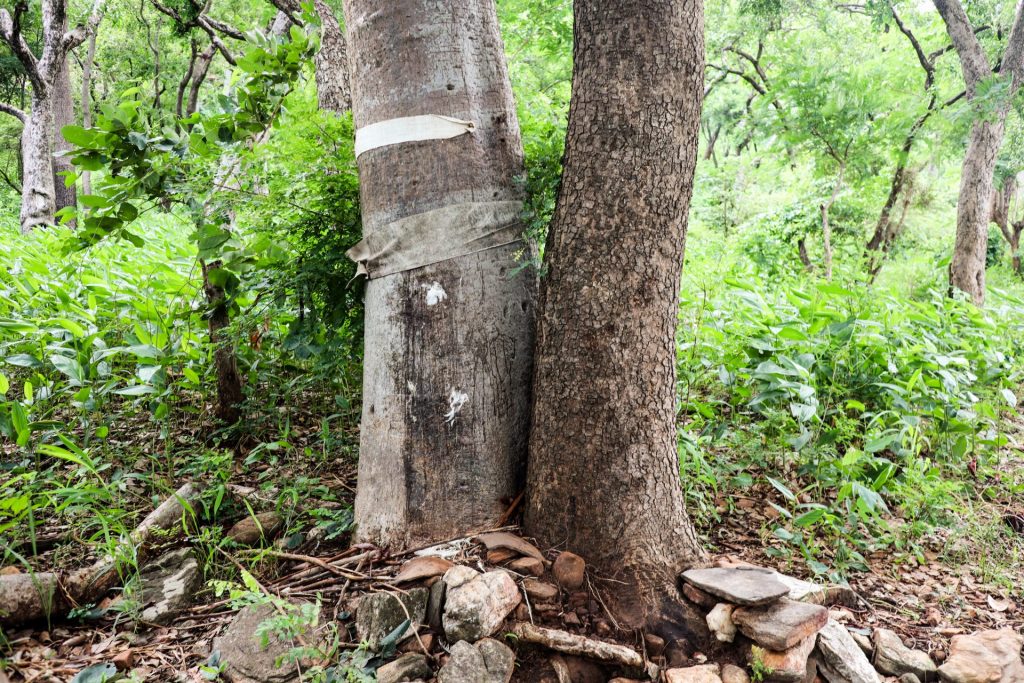
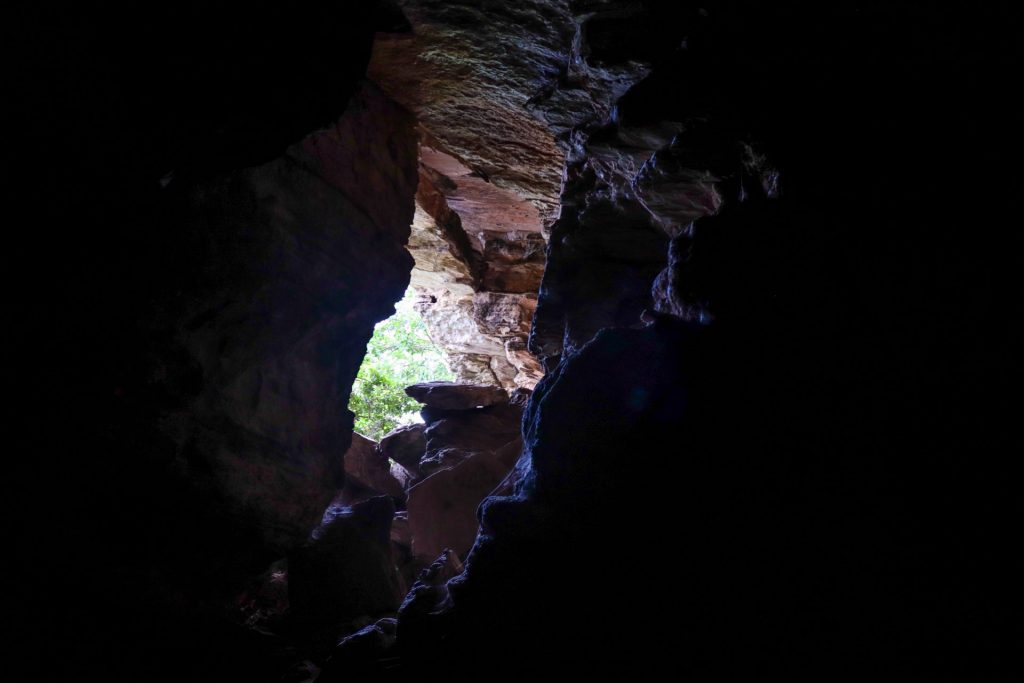
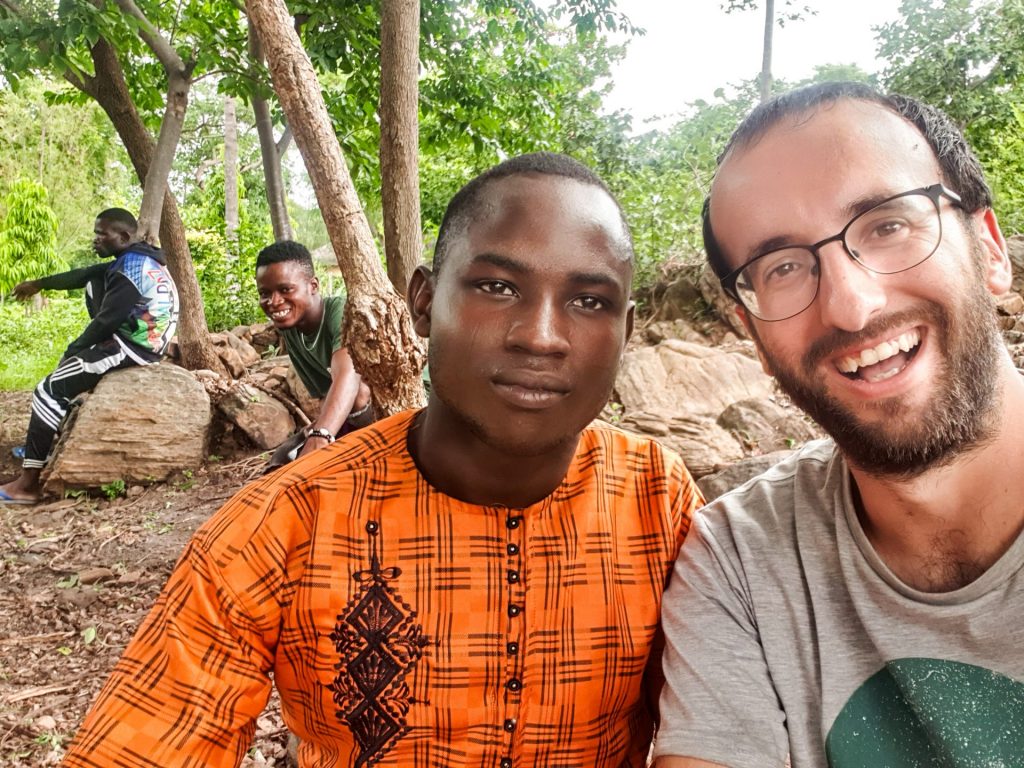



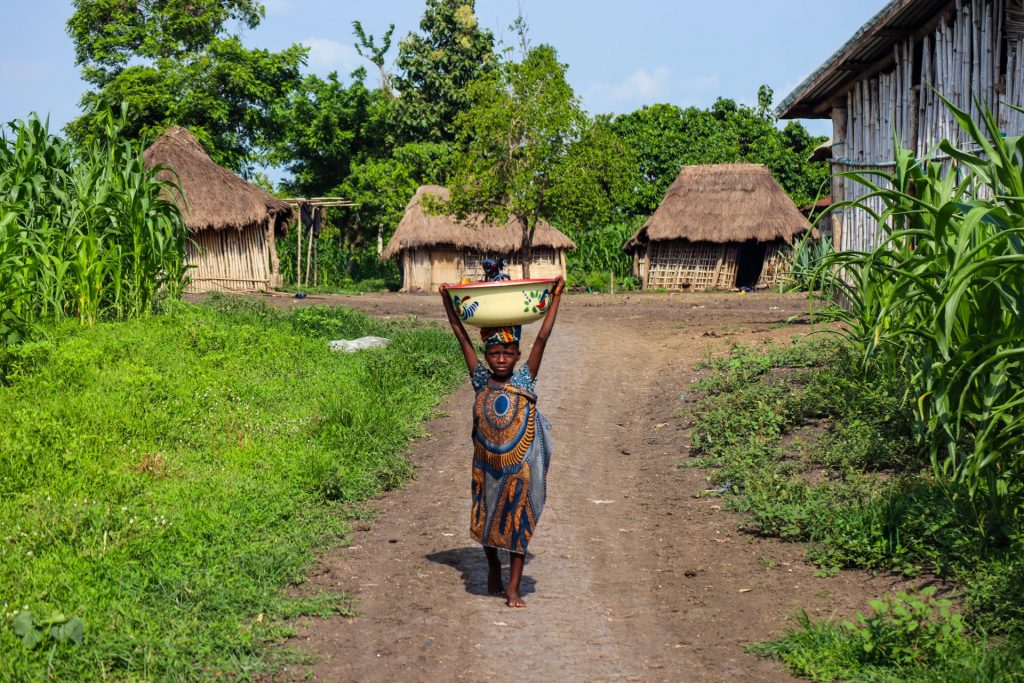
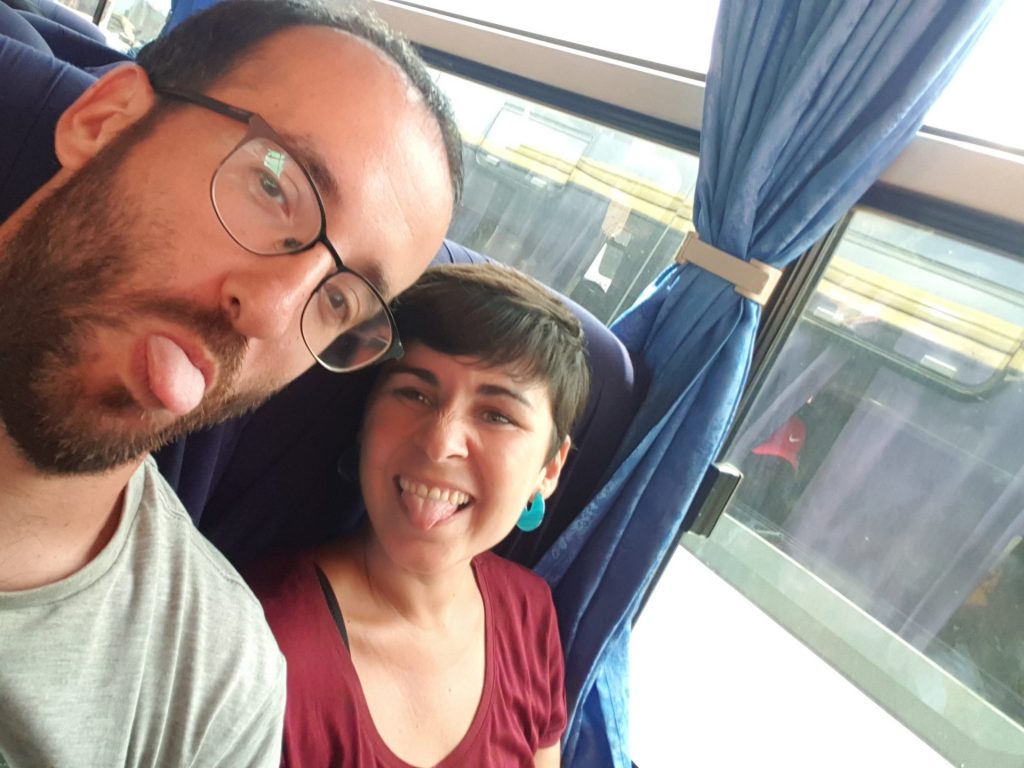

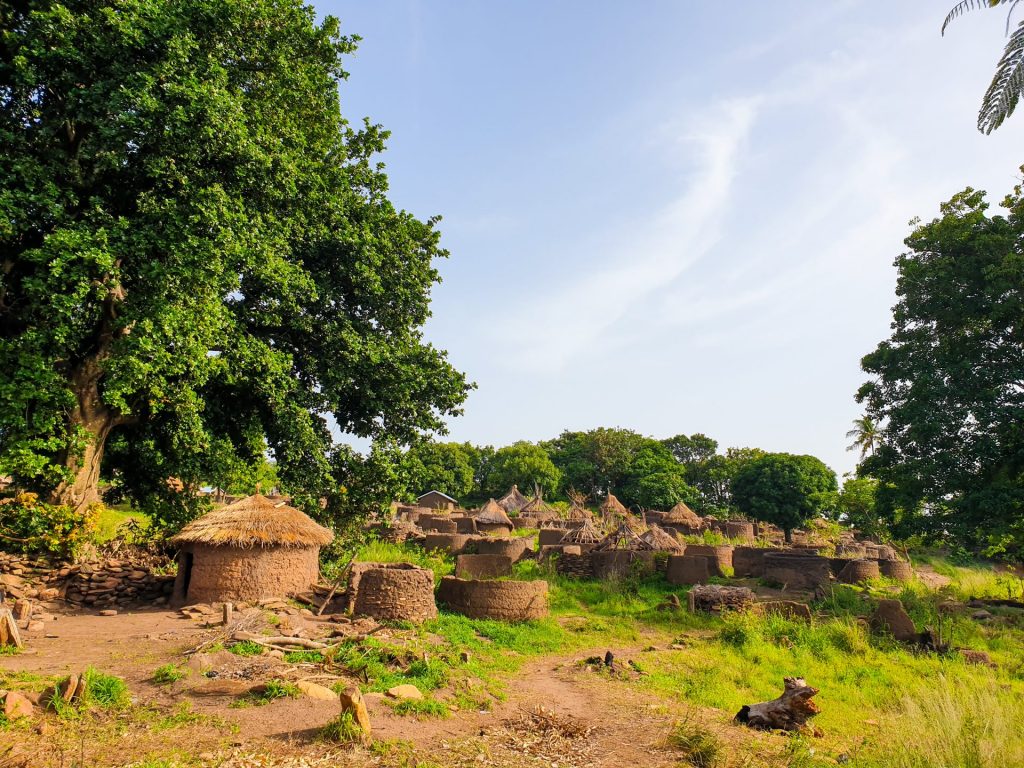


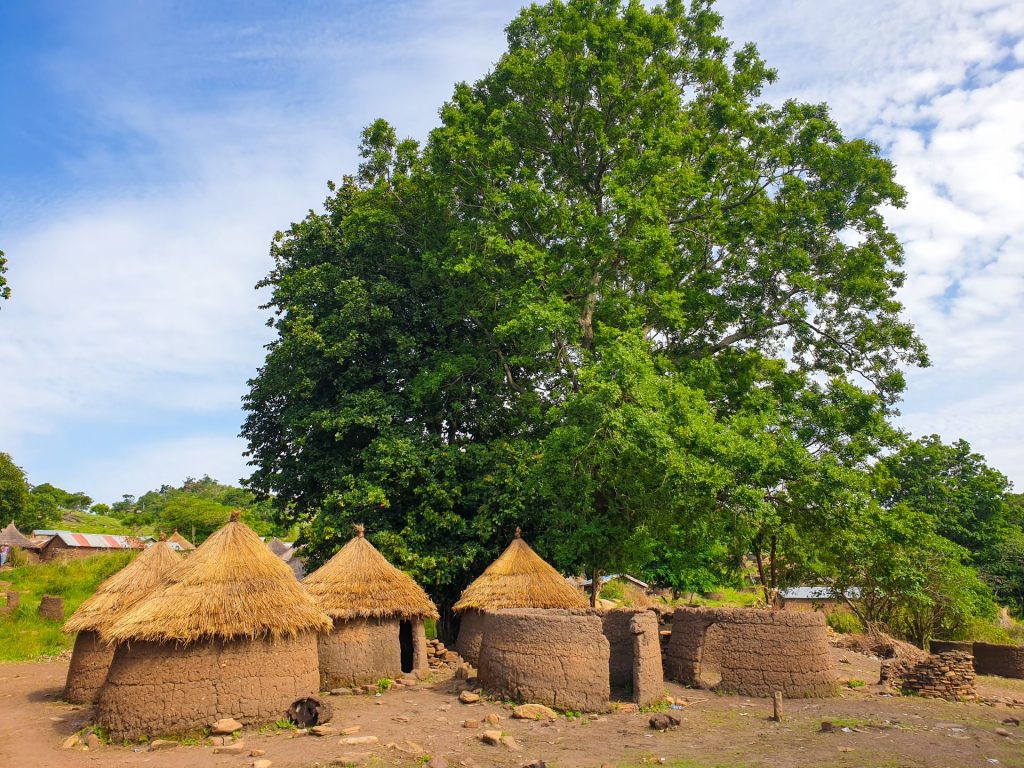

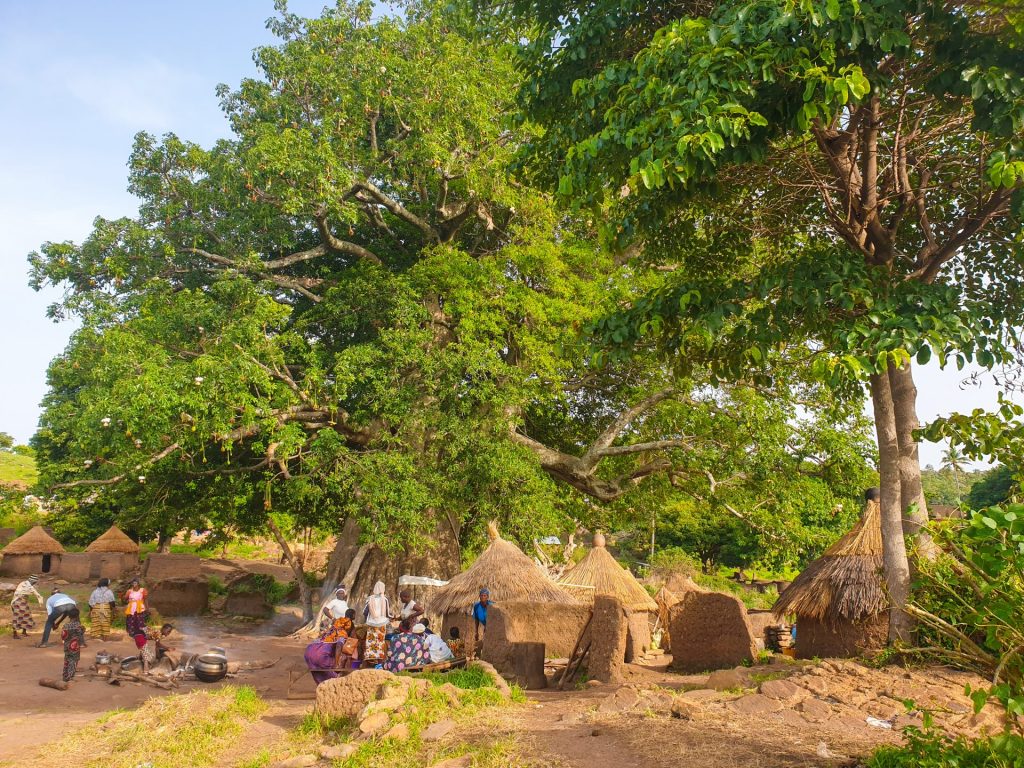
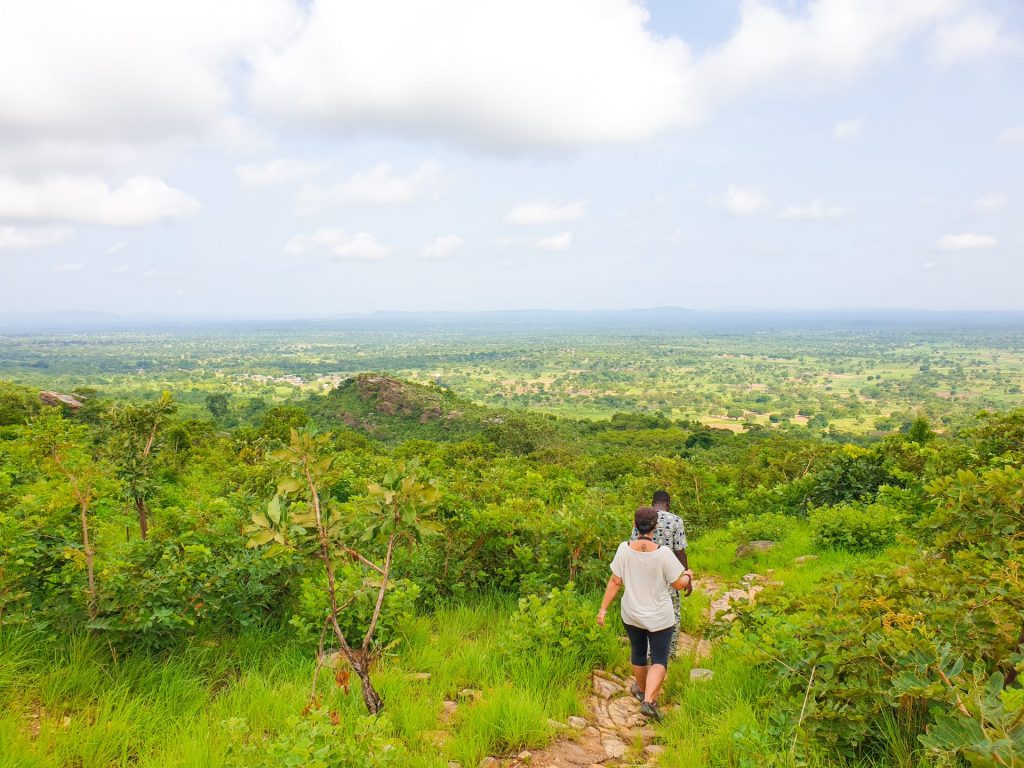

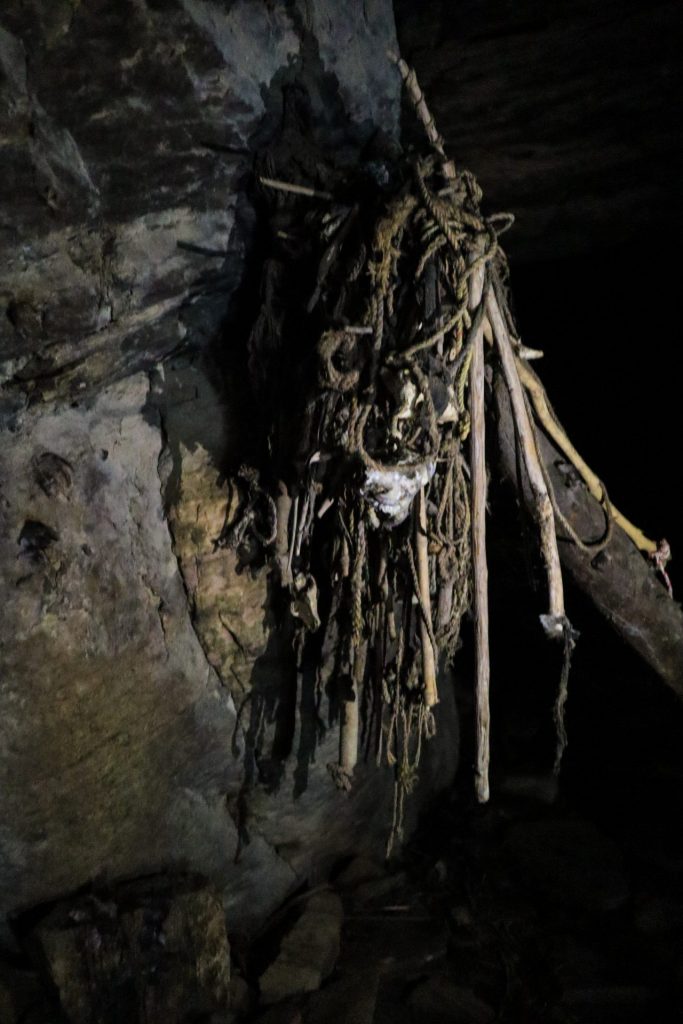
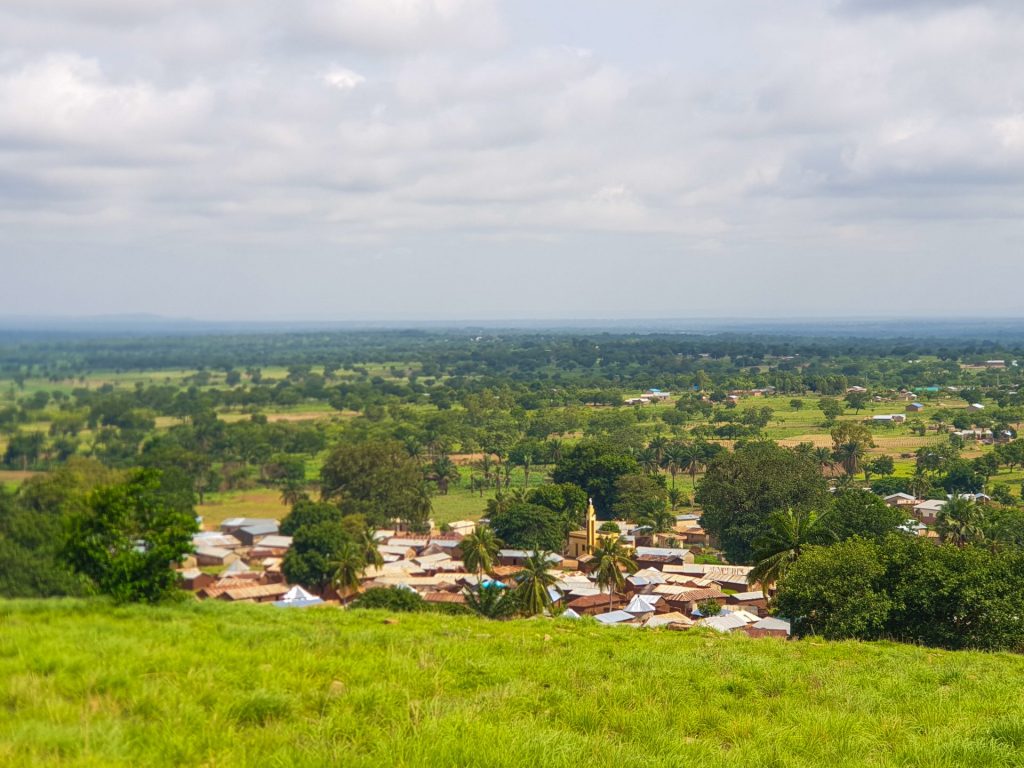


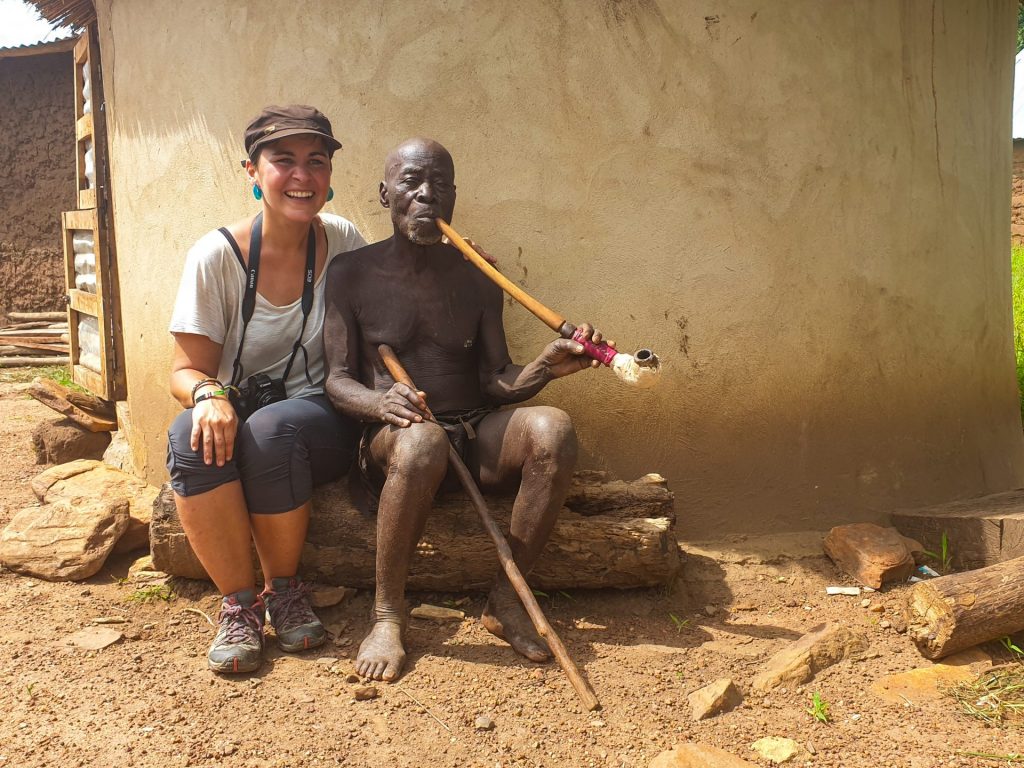
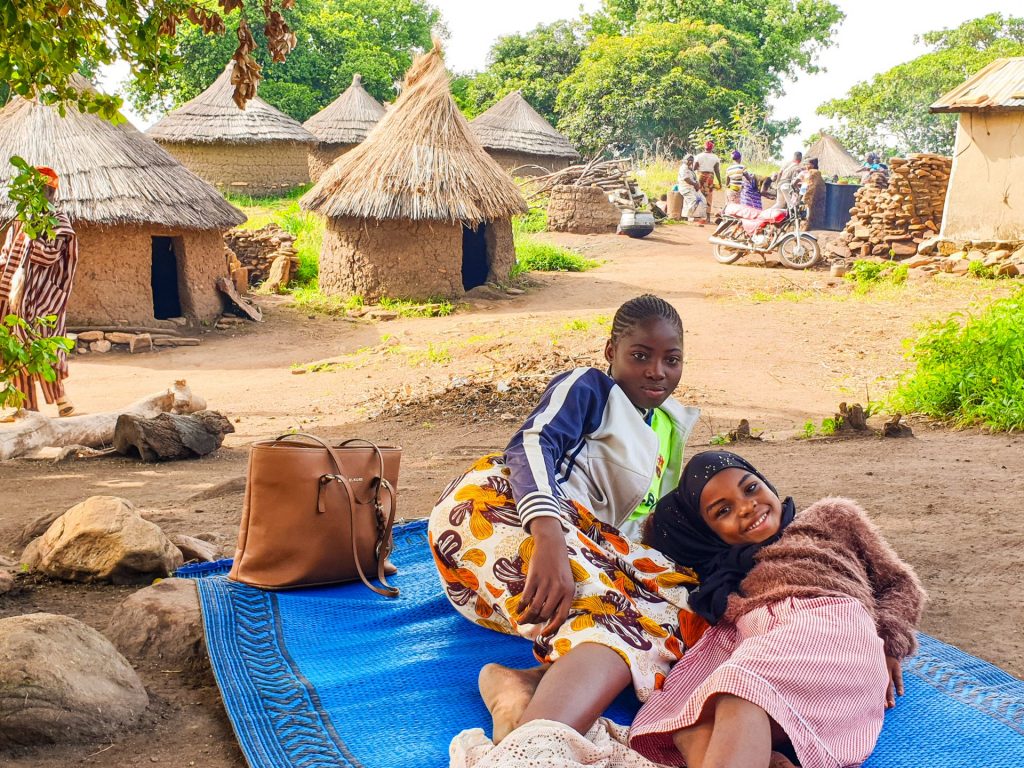

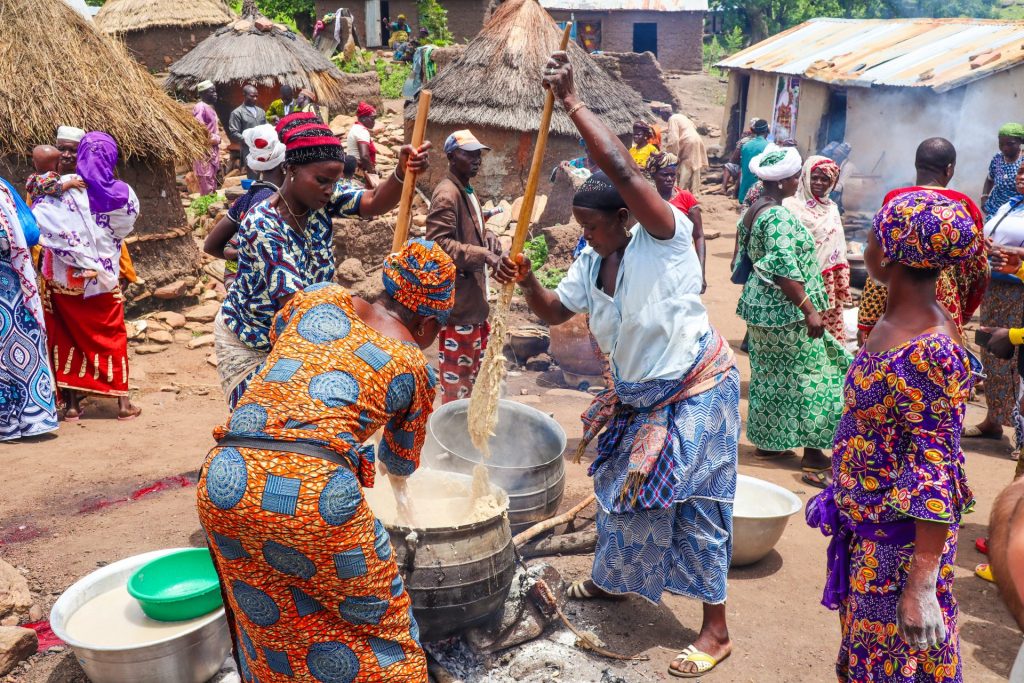
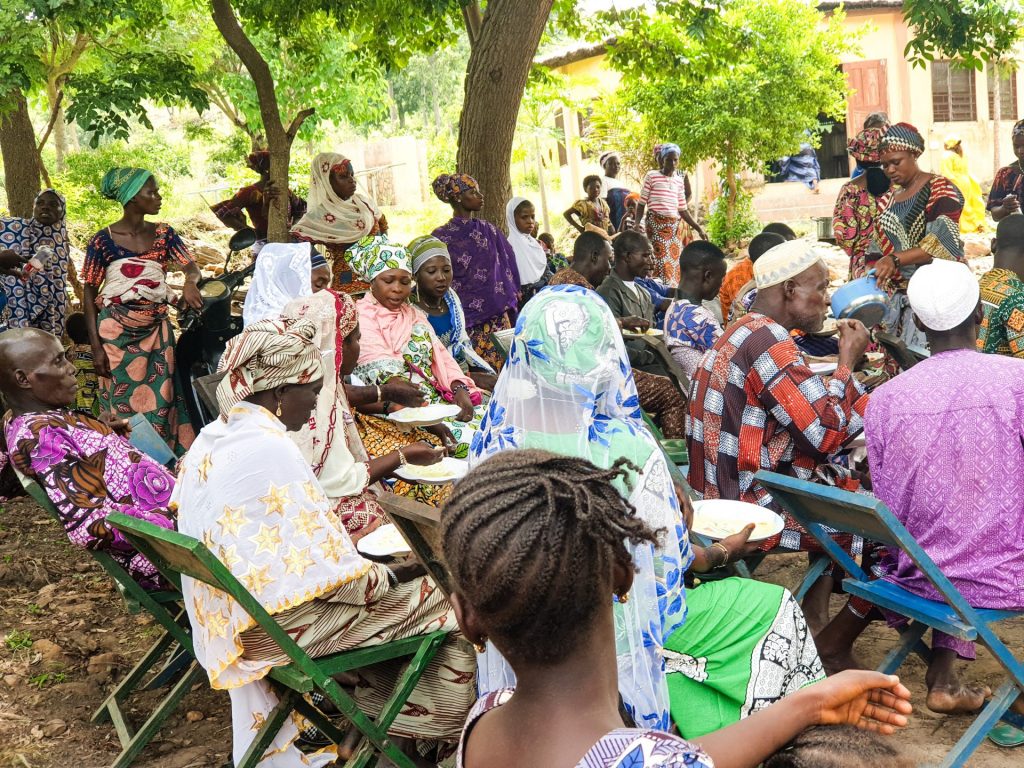
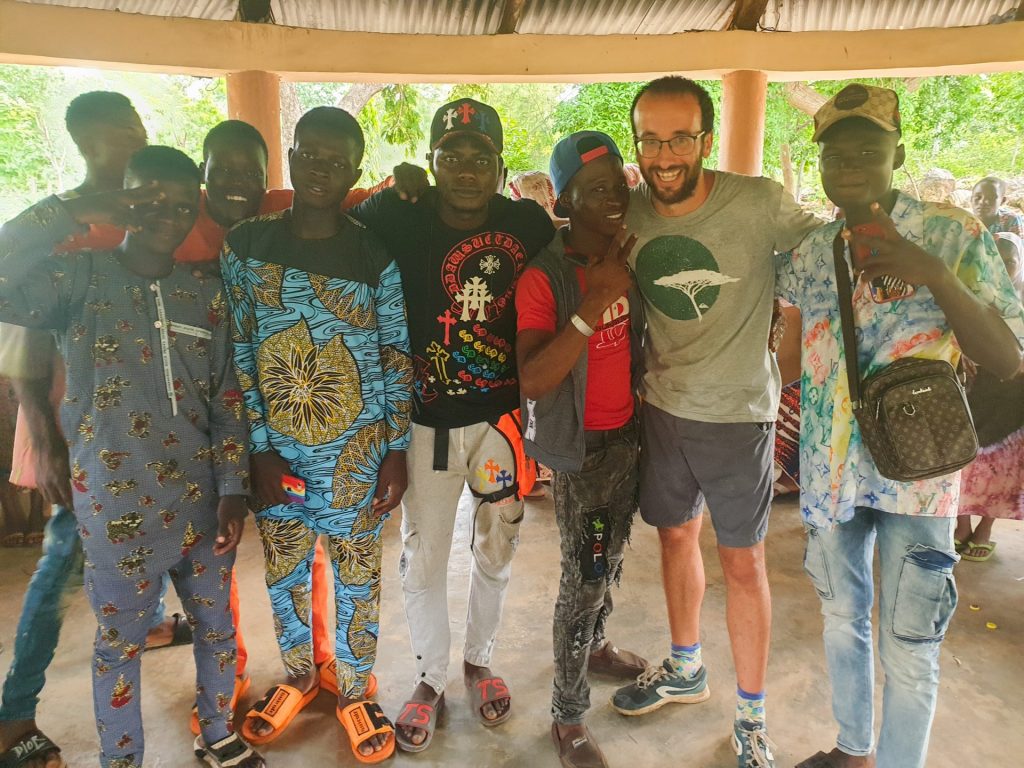


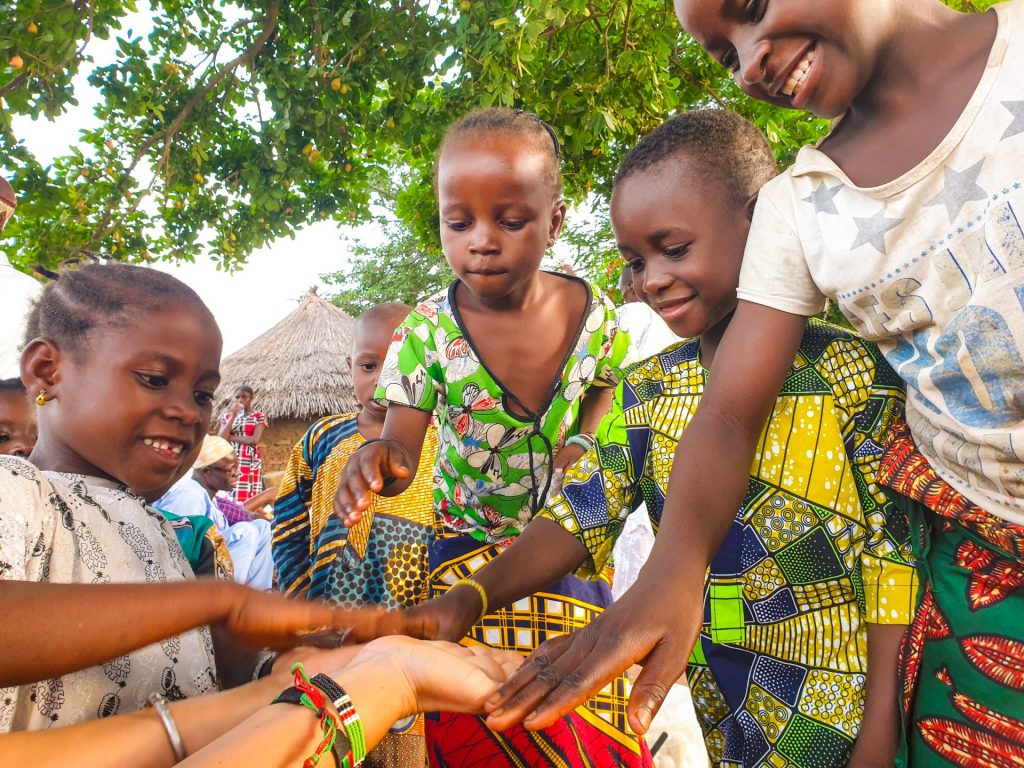
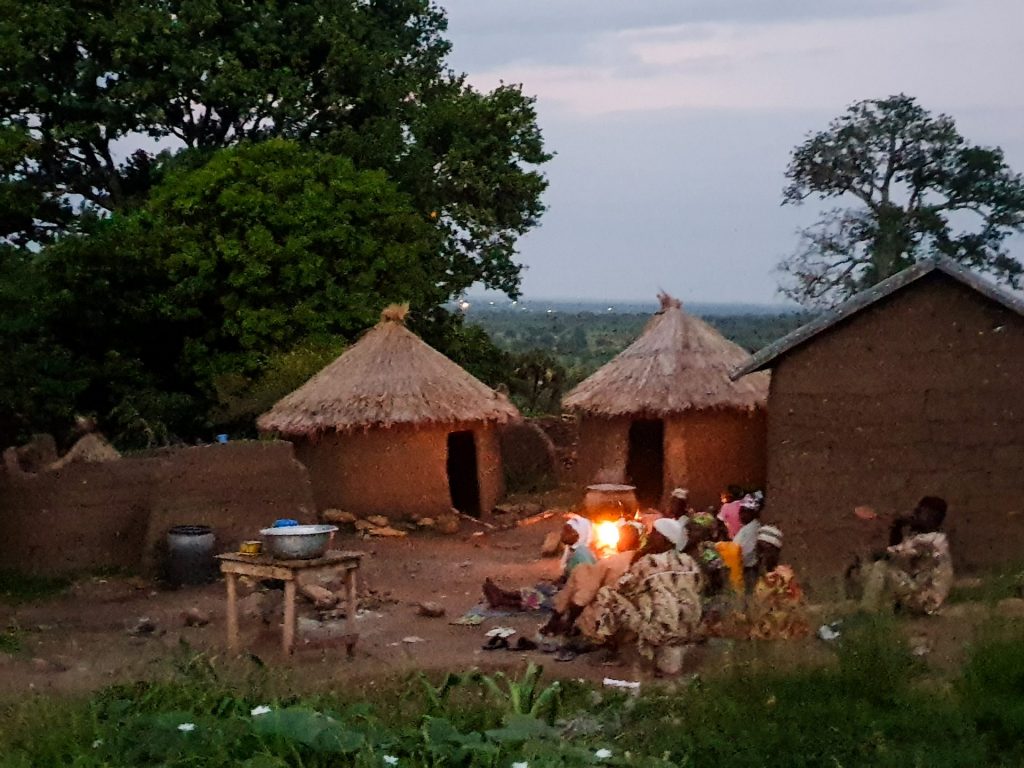


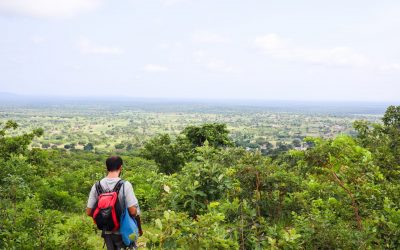

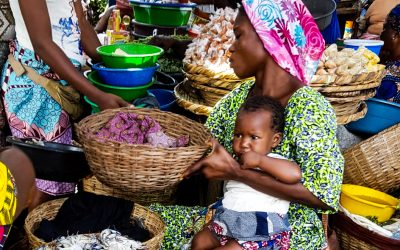

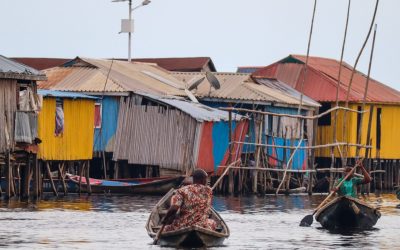
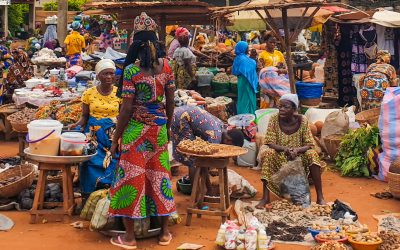
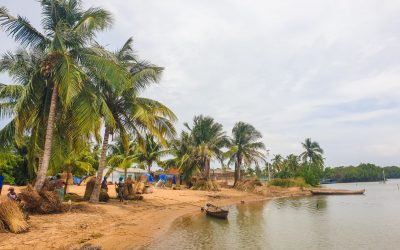
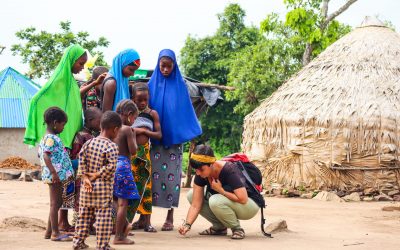
0 Comments